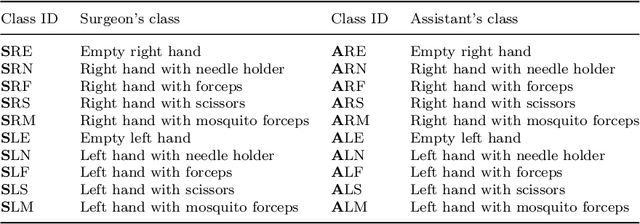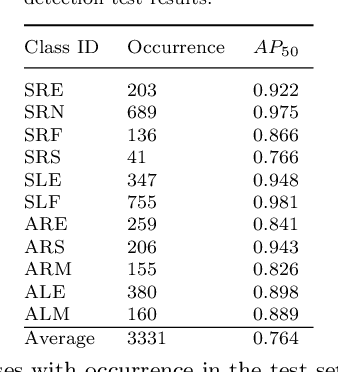Kristina Basiev
Open surgery tool classification and hand utilization using a multi-camera system
Nov 11, 2021



Abstract:Purpose: The goal of this work is to use multi-camera video to classify open surgery tools as well as identify which tool is held in each hand. Multi-camera systems help prevent occlusions in open surgery video data. Furthermore, combining multiple views such as a Top-view camera covering the full operative field and a Close-up camera focusing on hand motion and anatomy, may provide a more comprehensive view of the surgical workflow. However, multi-camera data fusion poses a new challenge: a tool may be visible in one camera and not the other. Thus, we defined the global ground truth as the tools being used regardless their visibility. Therefore, tools that are out of the image should be remembered for extensive periods of time while the system responds quickly to changes visible in the video. Methods: Participants (n=48) performed a simulated open bowel repair. A Top-view and a Close-up cameras were used. YOLOv5 was used for tool and hand detection. A high frequency LSTM with a 1 second window at 30 frames per second (fps) and a low frequency LSTM with a 40 second window at 3 fps were used for spatial, temporal, and multi-camera integration. Results: The accuracy and F1 of the six systems were: Top-view (0.88/0.88), Close-up (0.81,0.83), both cameras (0.9/0.9), high fps LSTM (0.92/0.93), low fps LSTM (0.9/0.91), and our final architecture the Multi-camera classifier(0.93/0.94). Conclusion: By combining a system with a high fps and a low fps from the multiple camera array we improved the classification abilities of the global ground truth.
 Add to Chrome
Add to Chrome Add to Firefox
Add to Firefox Add to Edge
Add to Edge